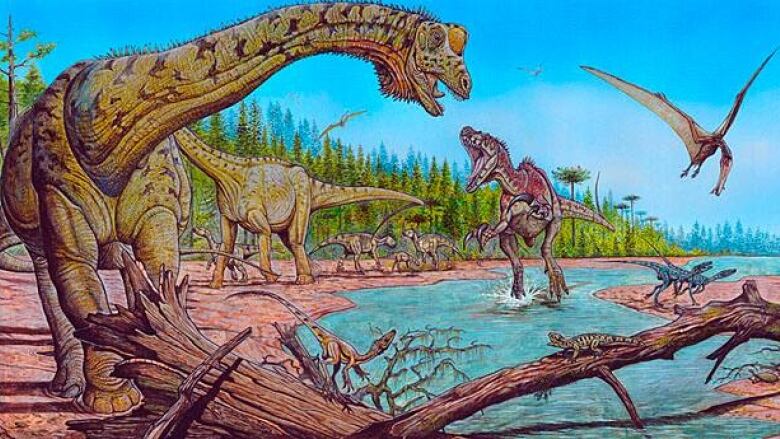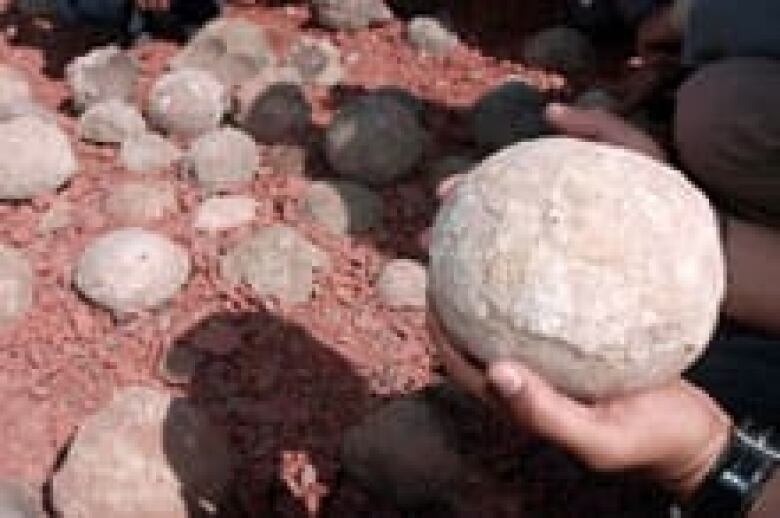Big dinosaurs' mini eggs helped push them to extinction

The fact that big dinosaurs laid tiny eggs put them at a huge disadvantage tomammals and was likely a significant factor leading to their extinction, a new study has found.
Compared to mammals, which give birth to live young, giant dinosaurs were disproportionatelysmall when first hatched, said researchers at the University of Zurich who conducted the study.
For example, huge, long-necked plant-eating dinosaurs called titanosaurs weighed four tonnes as adultsabout the same as an African elephantbut were roughly the size of a rabbit and 2,500 times smaller than their parents when first hatched.
Baby elephants, on the other hand, are born just 22 times smaller than their mothers (with a birth weight of about 180 kilograms), according to a University of Zurich news release Wednesday about the study published in the journal Biology Letters.

University of Zurich researchers Daryl Codron and Marcus Clauss, along with colleagues in South Africa, the U.S. and the U.K., decided to examine the consequences using a computer model.
They found that the huge size changes that big dinosaurs went through as they grew was a major reason why there weren't many species of dinosaurs that grew to be small or medium-sized adults. Smaller dinosaurs would have had to compete for food, shelter and other resources with the similar-sized young of very large dinosaurs.
Meanwhile, mammals, which have larger young that are fed by their parents, did not have the same problem and there were many small and medium-sized species.
Around 65.5 million years ago, a natural catastrophe that may have been set off by a large meteor hitting the Earth led to the mass extinction of many plant and animal species, including all animals larger than a medium-sized dog such as a springer spaniel.
Mammals had many species smaller than that, but dinosaurs did not. That may have made it impossible for dinosaurs to repopulate after the extinction, allowing mammals to diversify and become the dominant land animals, the study suggested.












_(720p).jpg)


 OFFICIAL HD MUSIC VIDEO.jpg)
.jpg)



























































































